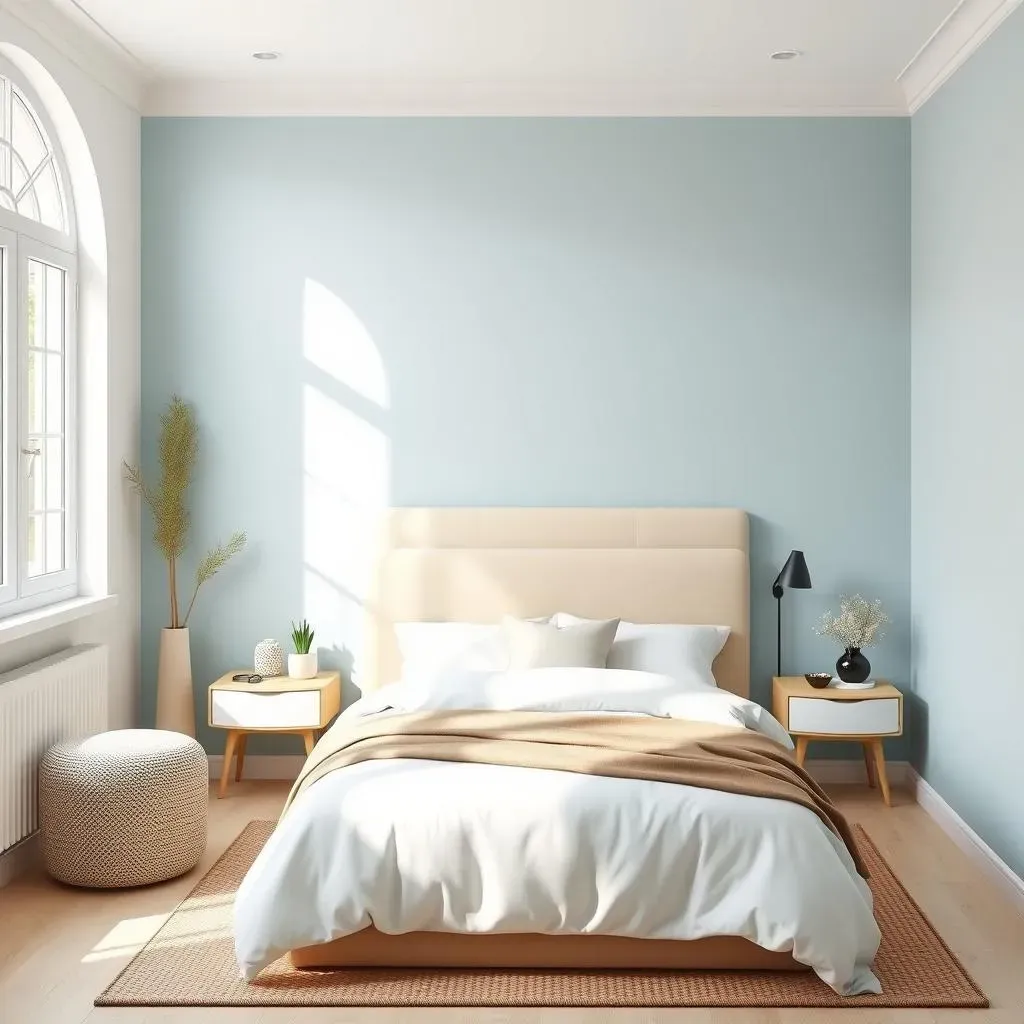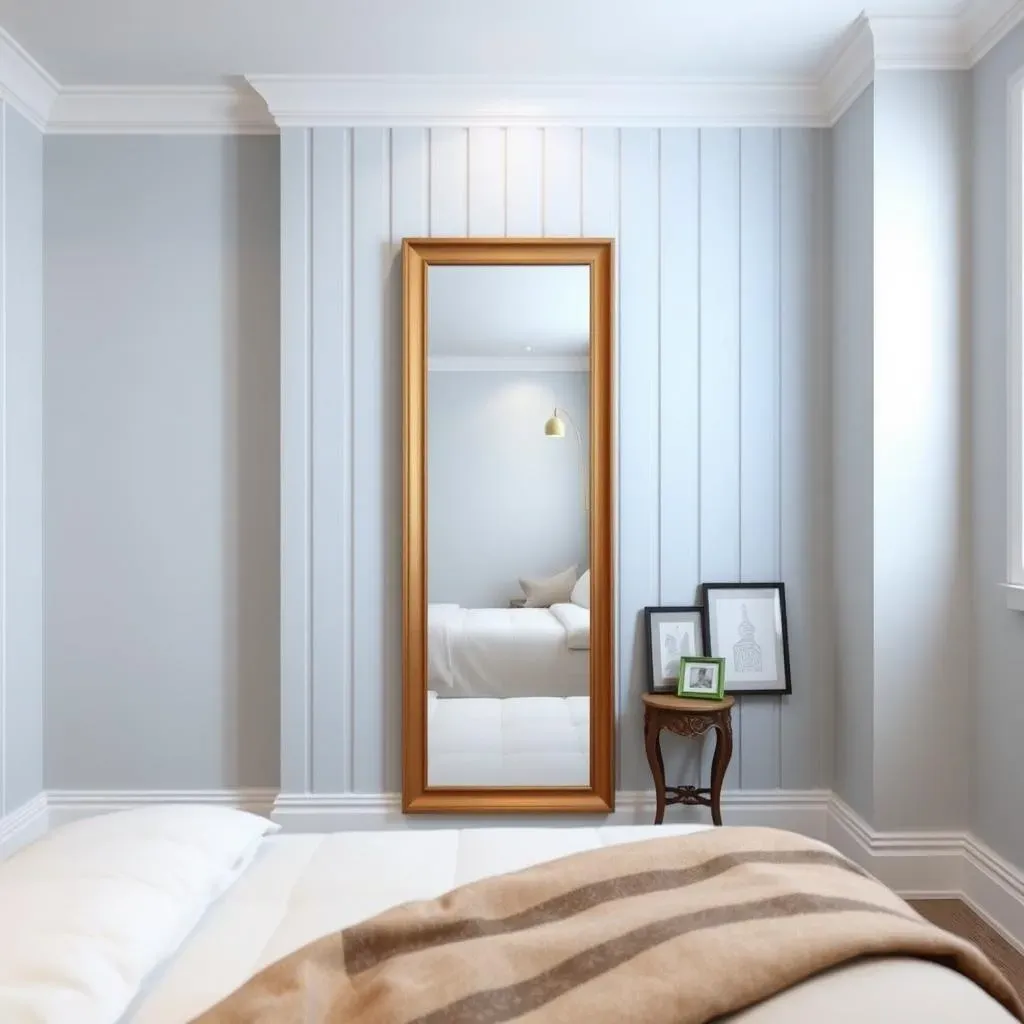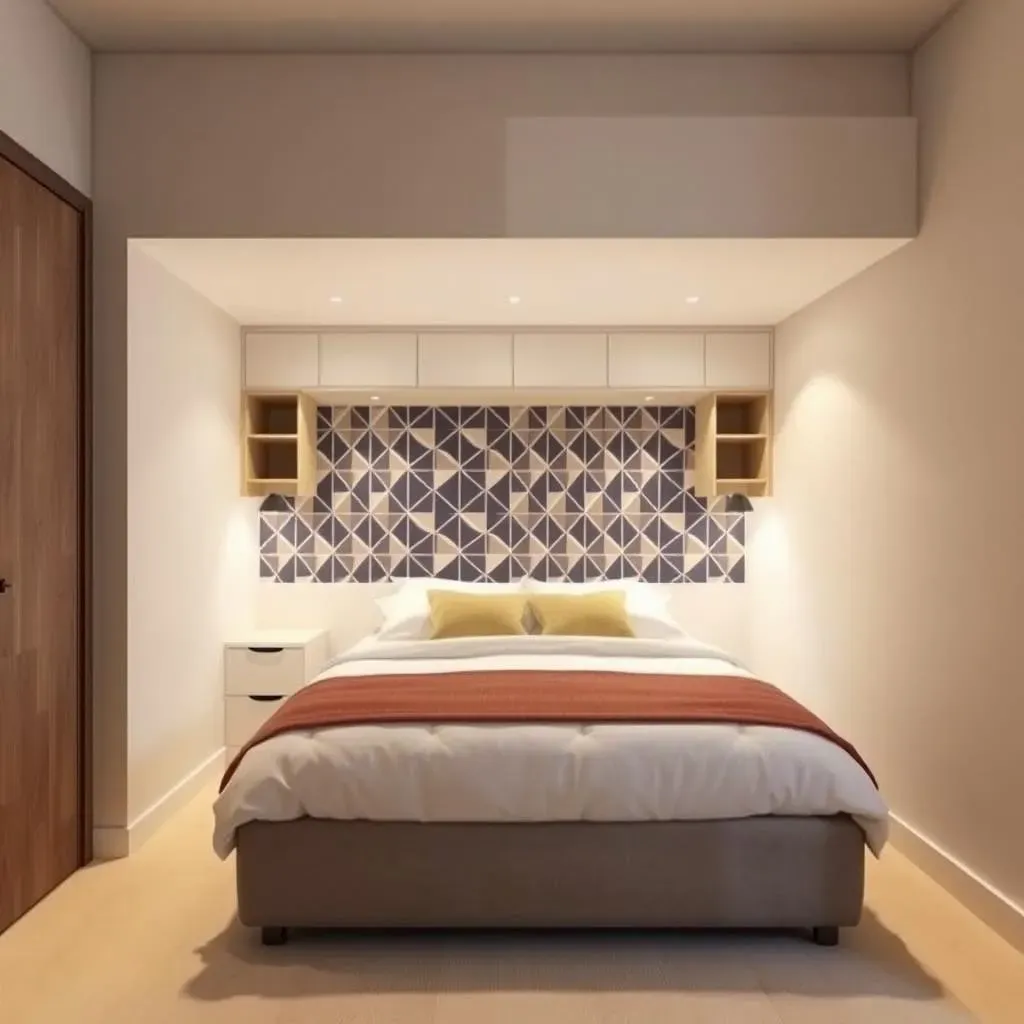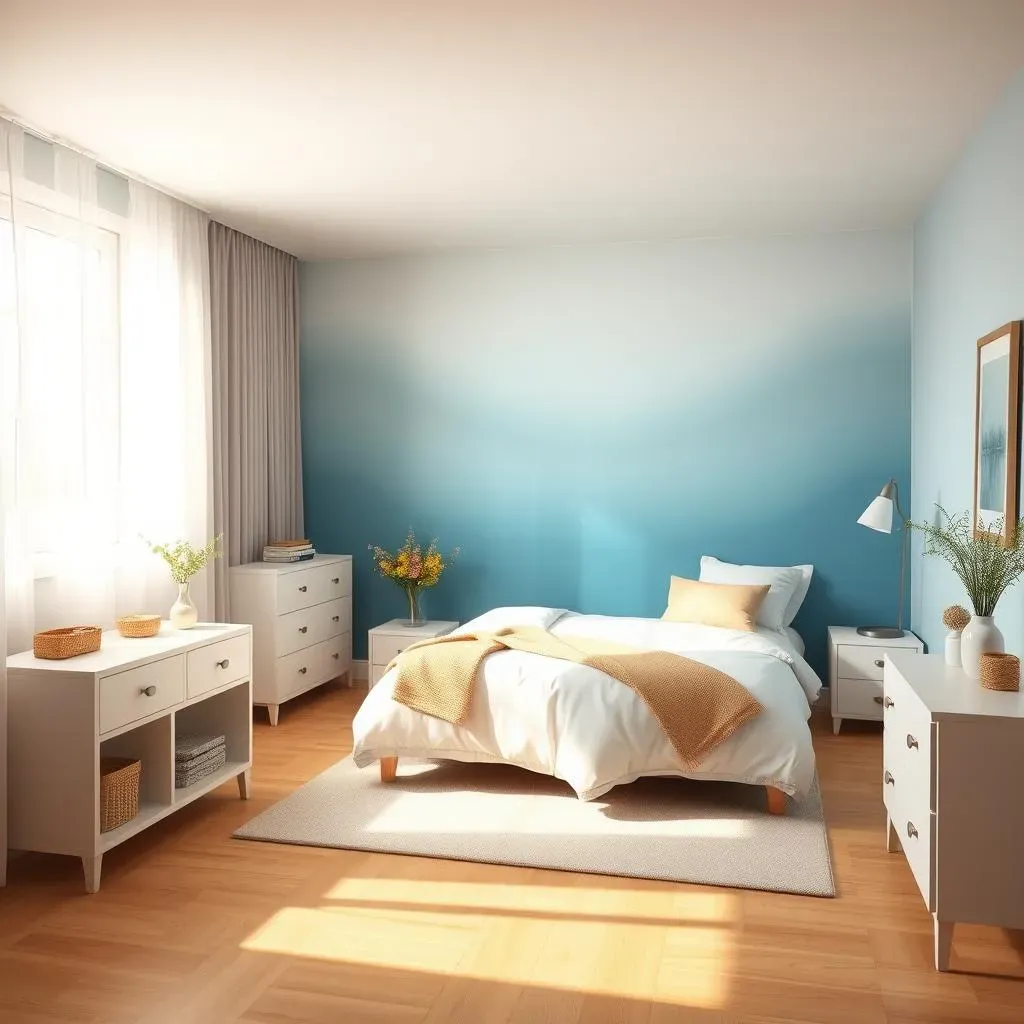Table of Contents
Feeling cramped in your small bedroom? Don't let limited space stifle your style! This article is your guide to unlocking the transformative power of accent walls. We'll explore a wealth of bedroom accent wall ideas for small rooms, proving that even the tiniest bedroom can be a haven of personality and design. Get ready to ditch the feeling of claustrophobia and embrace clever color palettes, space-saving design tricks, and inspiring visual illusions. We'll show you how to choose the perfect color to make your room feel bigger, brighter, and more inviting. Discover innovative ways to incorporate patterns and textures without overwhelming your space. From budget-friendly DIY projects to more ambitious transformations, we've got the perfect accent wall solution for your small bedroom. Prepare to be amazed by how much impact a single wall can have! Let's dive in and create the bedroom of your dreams.
Clever Color Choices for Small Bedroom Accent Walls

Clever Color Choices for Small Bedroom Accent Walls
Light and Bright: Maximizing Space with Color
When it comes to small bedrooms, light colors are your best friend. Think soft whites, creamy pastels, and airy blues. These shades reflect light, making the room feel instantly larger and more open. A light-colored accent wall, especially opposite a window, will amplify natural light, creating a sense of spaciousness. Avoid heavy, dark shades as these can absorb light and make the room feel smaller and more enclosed. Think of it like this: a dark wall is like a black hole for light, while a light one acts as a mirror, bouncing light around the room.
Consider using a slightly warmer white, like "cream" or "eggshell," to avoid a sterile look. These subtle variations add warmth and depth without sacrificing the light-reflective properties that expand your space. Remember to coordinate your accent wall color with your bedding and other furnishings for a cohesive and visually pleasing effect. A touch of texture, such as a subtle wallpaper pattern, can add visual interest without being overwhelming in a small room.
Color | Effect | Best for |
|---|---|---|
Soft White | Bright, airy, spacious | Modern, minimalist styles |
Pastel Blue | Calm, relaxing, serene | Coastal, bohemian styles |
Creamy Beige | Warm, inviting, cozy | Traditional, farmhouse styles |
Strategic Color Blocking: Adding Depth and Dimension
Instead of painting the entire accent wall a single color, experiment with color blocking. This technique involves dividing the wall into sections of different colors or shades. For example, you could paint the bottom half of the wall a darker shade and the top half a lighter one, creating a visually interesting effect that also adds a sense of height. This is particularly effective in rooms with low ceilings, as it creates an illusion of more vertical space. Or, you might use two complementary shades to create a subtle, yet striking contrast.
Another option is to use a bold accent color on a smaller portion of the wall, perhaps framing a piece of artwork or a headboard. This creates a focal point without dominating the room. Remember to choose colors that complement each other and create a harmonious overall look. Consider using a color wheel to find complementary or analogous colors that will work well together. The key is to balance the bold color with softer tones to prevent the space from feeling visually cluttered. Using color strategically can make a small room look much larger and more sophisticated.
- Choose light base colors to make the room feel bigger.
- Use darker colors strategically to add depth and dimension.
- Coordinate colors with your bedding and furniture.
SpaceSaving Design Ideas for Bedroom Accent Walls in Small Rooms

SpaceSaving Design Ideas for Bedroom Accent Walls in Small Rooms
Mirrors, Mirrors on the Wall: Expanding Space with Reflection
Mirrors aren't just for admiring your reflection; they're powerful tools for visually expanding a small space. A large mirror placed strategically on your accent wall can dramatically increase the perceived size of your bedroom. The reflection doubles the visual space, creating the illusion of a larger, more open area. Consider a full-length mirror, perhaps framed in a style that complements your décor, or a series of smaller mirrors arranged in a creative pattern. Position the mirror to reflect a light source, such as a window or lamp, to further enhance the feeling of spaciousness. It's a simple yet effective trick that works wonders in small bedrooms.
Don't just stick to standard mirrors. Get creative! A mirrored headboard, or even a mirrored accent piece of furniture, can subtly increase the light and space in your room. If you're feeling particularly adventurous, consider a unique mirrored tile arrangement to make a statement on your accent wall while simultaneously maximizing light and space. The possibilities are endless and totally adaptable to your style!
Mirror Type | Placement | Effect |
|---|---|---|
Full-length mirror | Opposite window | Amplifies natural light, creates depth |
Mirrored headboard | Behind bed | Adds light and visual interest |
Mirrored tiles | Accent wall | Unique design, maximizes light |
Vertical Stripes: The Illusion of Height
Vertical stripes are a classic design trick for making a room feel taller. On your accent wall, vertical stripes, whether painted or using wallpaper, create a visual illusion of increased height, making your small bedroom feel more spacious and less cramped. Choose a light and airy color palette for the stripes to enhance the effect. Thin stripes will be more subtle, while wider stripes will create a more dramatic impact. The key is to keep the overall look clean and uncluttered, so avoid overly busy patterns or clashing colors. This is a simple yet effective way to add visual interest while simultaneously making your room look taller.
Think outside the box when applying vertical stripes! You don't have to paint stripes directly onto the wall. Consider using vertical wood paneling, or even a series of vertical picture frames containing artwork or photographs to create a vertical stripe effect. This adds texture and visual interest while achieving the same space-enhancing results. Remember to consider the overall style of your bedroom when choosing your stripe pattern and color. A classic, simple stripe can work well with many styles, while a more bold or unique pattern will create a more statement look.
- Use light and airy colors for stripes.
- Vary stripe width for different effects.
- Consider alternative stripe patterns (wood paneling, pictures).
Transforming Tiny Spaces: More Bedroom Accent Wall Ideas for Small Rooms

Transforming Tiny Spaces: More Bedroom Accent Wall Ideas for Small Rooms
Wallpaper Wonders: Adding Personality and Depth
Don't underestimate the power of wallpaper! A carefully chosen wallpaper can add depth, texture, and personality to a small bedroom without overwhelming the space. Opt for a wallpaper with a subtle pattern or a light color scheme to avoid making the room feel smaller. A delicate floral print, a geometric design, or even a textured wallpaper can add visual interest without being overwhelming. Consider a wallpaper with a vertical stripe pattern to create the illusion of height, as we discussed earlier. Remember to choose a wallpaper that complements your existing décor and reflects your personal style.
Think about the lighting in your room when selecting wallpaper. A dark or busy pattern might make a dimly lit room feel cramped. In contrast, a light and airy design can brighten up a space and make it feel more open. If you're unsure about committing to wallpapering an entire wall, consider using it as a feature within a larger design scheme, such as framing a headboard or creating a focal point around a piece of artwork. The key is to use wallpaper strategically to enhance your design rather than let it dominate the room.
- Choose a subtle pattern or light color scheme.
- Consider vertical stripes to create height.
- Complement existing décor and personal style.
- Use strategically as a feature, not to dominate.
Creative Headboard Solutions: Maximizing Space and Style
The headboard is a key element in a bedroom's design, and in a small room, it can significantly impact the overall feel. Instead of a bulky traditional headboard, consider a more space-saving alternative. A built-in headboard, integrated seamlessly into the accent wall, maximizes space while creating a stylish focal point. This is particularly effective if your bed is positioned against the accent wall. The built-in headboard can be customized to match your style, with options ranging from simple shelving to more elaborate designs incorporating lighting or storage.
If a built-in headboard isn't feasible, consider a smaller, more streamlined headboard. A upholstered headboard in a light color can add a touch of luxury without overwhelming the space. Or, you could opt for a headboard made from lightweight materials like rattan or bamboo, adding texture and visual interest without taking up too much space. Remember to coordinate your headboard with your accent wall to create a unified and cohesive look. The headboard is an opportunity to add a touch of elegance or whimsy while keeping things practical in a small space.
Headboard Type | Pros | Cons |
|---|---|---|
Built-in | Space-saving, stylish, customisable | More expensive, requires installation |
Upholstered | Comfortable, luxurious, versatile | Can be bulky, may need cleaning |
Lightweight (rattan, bamboo) | Stylish, airy, affordable | Less durable, may require maintenance |
